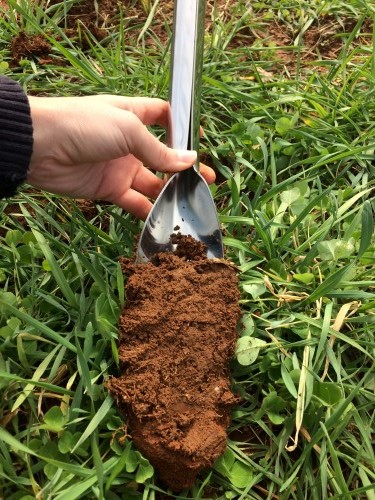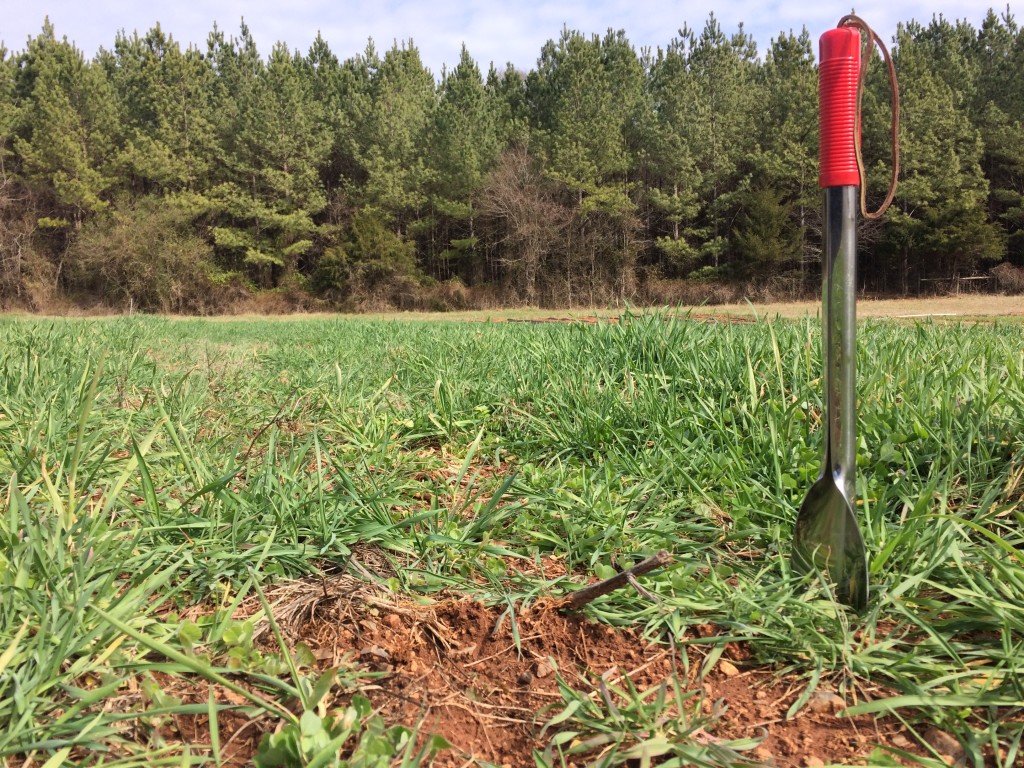by Gena Moore, CFSA Organic Research Coordinator | Feb. 10, 2017 –
Soil sampling is an essential task for almost every grower. Whether you’re a home gardener, market gardener, commercial row-cropper, or somewhere in between, you’ll need your soil tested at some point. Knowing how to best sample your soil, where to send the sample and how to interpret the results are all important tasks. Below are some tips for successfully sampling your soil and understanding the results!
First, decide on a soil testing lab. There are several labs that test the soil in multiple ways. Remember, there is no “perfect” soil test and you always need to accept a margin of error in results.
The best practice is to pick a testing lab that will give you your needed soil information and continue testing with the same lab for most future soil tests. This will provide the most reliable way to track any changes in your soil.
Below are a few soil testing labs to choose from:
North Carolina Department of Agriculture
- December-March: $4, April-November: FREE
- Mail samples directly to the lab or drop the off
This is the most commonly used soil lab and soil testing method used in North Carolina. Soil results include Phosphorus and Potassium levels along with several other macro- and micro-nutrients. NC Cooperative Extension Agents can help with the sampling and reading results.
Clemson University Soil Testing
- Standard Soil Test Cost: $6 (add-ons available at extra cost)
- Mail samples directly to the lab or drop them off at your local SC Cooperative Extension Office.
This is a commonly used soil lab and testing method for South Carolina residents. Soil results include Phosphorus and Potassium levels along with other nutrients. SC Cooperative Extension Agents can help with the sampling and reading results.
Ward Laboratories: Haney Soil Health Test
- Cost: $49.50
- Mail samples directly to the lab.
This is a newer soil testing method. There are a few other labs that use the same testing methods so Ward Laboratories is not the only choice for this specific test. Results include Nitrogen, Phosphorus, and Potassium levels along with other nutrients. This test also includes cover crop recommendations and a soil health score.
How to Take a Sample
1. How Deep?
The common recommendation for both NCDA and Clemson soil samples is to sample the top 4-6 inches of your soil. Meanwhile, Ward Laboratories recommends taking samples to a depth of at least 8 inches.
Be sure to check the proper sampling technique and depth with your desired lab before sampling.

2. How Much?
After the depth is established, map out or visualize your space. If you’re using a permanent bed model, submit one sample per bed, otherwise, submit one sample per area.
An area can be a 20’ x 30’ garden, a 100’ 200’ market garden area, or a multi-acre field. You should take 10-15 small sub-samples per area. These sub-samples should be combined in a clean bucket and mixed. If the soil is super moist, spread it out on clean paper to dry a little before continuing to the next step.
3. Specified, Sealed, & Delivered
Finally, use the mixed soil sample to fill your appropriate sample container. Know that most labs will have a specific box or bag in which they request the sample be sent.
Mail-in or drop-off your sample at the lab. Make sure to submit any needed documents along with soil samples. On these forms, you can add what crop(s) you are planting next for even more specialized results.
It usually takes a few weeks to receive your soil results. Results are typically sent electronically but other mailing options may be available.
Local Cooperative Extension Agents are available to assist in interpreting results. Most sample results will include fertilizer recommendations for further crop production in your garden/area. Please note that recommendations are based on a standard rate like pounds of fertilizer per acre. Be sure to properly calculate the fertilizer recommendations for your specific area.
Continue submitting soil samples on an annual basis to track changes in your soil.
Questions?
Contact Gena Moore at CFSA for assistance.



